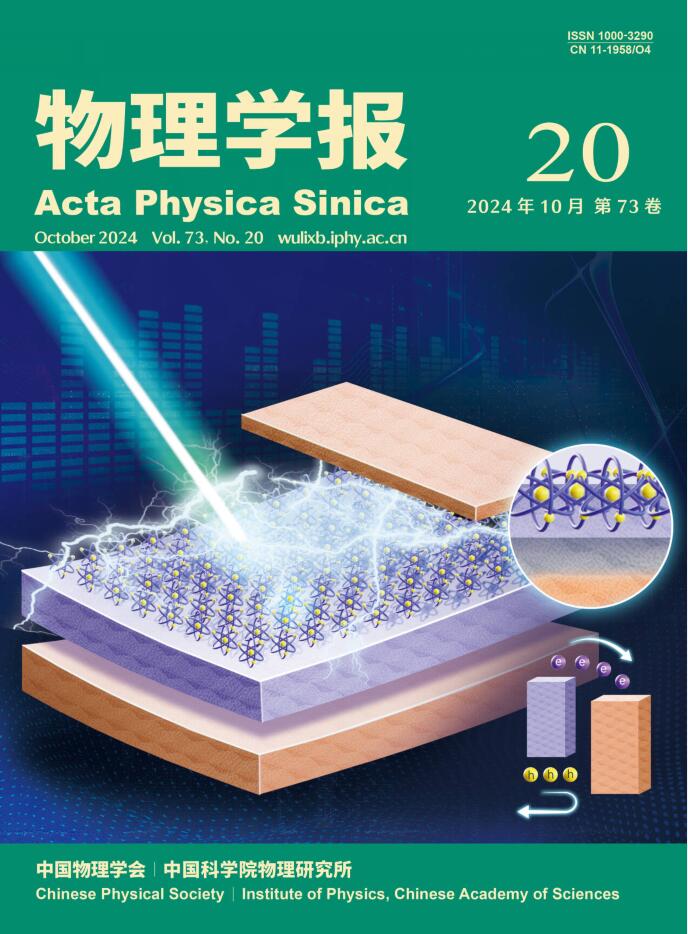Channel processing-based time-reversal method for multi-target tunable focusing
IF 0.8
4区 物理与天体物理
Q3 PHYSICS, MULTIDISCIPLINARY
引用次数: 0
Abstract
Achieving tunable focus of electromagnetic field energy at multiple target points is a critical challenge in the wireless power transfer (WPT) domain. Although techniques such as optimal constrained power focusing (OCPF) and time reversal (TR) have been proposed. The former presents limited practical applicability while the latter is noteworthy for its adaptive spatio-temporal synchronous focusing characteristics. However, the time reversal mirror (TRM) method necessitates intricate pretesting and has highly complex systems. In this study, we introduce a novel channel processing method, named channel extraction, selection, weighting, and reconstruction (CESWR), to attain balanced power distribution for multiple users, characterized by low complexity, high computability, and rapid convergence. Diverging from the traditional TR approach, our proposed method, grounded in channel correlation considerations, filters the channel impulse response (CIR) for multiple targets, segregating them into distinct characteristic and similar components for each target. This method ensures focused generation at both receiving ends while facilitating high-precision regulation of the peak voltage of the received signal. Furthermore, this study embarks on a rigorous examination of the linearity intrinsic to the proposed methodology, explicating a singular correspondence between the tuning of theoretical weights and the resultant outcomes. In order to authenticate the efficacy of this methodology, we construct a single-input multiple-output time-reversal cavity (SIMO-TRC) system for the experimental section of this manuscript. Subsequent experimentation, conducted for both loosely and tightly correlated models, furnishes invaluable insights. Evidently, in the loosely correlated model, the CESWR method exhibits proficiency in attaining a peak voltage ratio (PVR) of nearly 1.00 at the two receivers, with a minuscule numerical discrepancy of merely 8×10-6 mV. In stark contrast, under the tightly correlated model, the CESWR method demonstrates an enhanced ability to differentiate between two targets, thus offering a noticeable improvement over the classic single-target TR method.基于信道处理的多目标可调聚焦时间反转方法
实现多目标点电磁场能量的可调聚焦是无线电力传输(WPT)领域的一个关键挑战。目前已经提出了最优约束功率聚焦(OCPF)和时间反转(TR)等技术。前者的实用性有限,而后者的自适应时空同步聚焦特性值得注意。然而,时间反转镜(TRM)方法需要复杂的预测试,并且具有高度复杂的系统。本文提出了一种新的信道处理方法,即信道提取、选择、加权和重构(CESWR),以实现多用户的均衡功率分配,具有低复杂度、高可计算性和快速收敛的特点。与传统的TR方法不同,本文提出的方法基于信道相关的考虑,对多个目标的信道脉冲响应(CIR)进行滤波,将每个目标的信道脉冲响应分离为特征不同和相似的分量。这种方法确保了在两个接收端集中产生,同时便于对接收信号的峰值电压进行高精度调节。此外,本研究开始对所提出的方法固有的线性进行严格检查,解释了理论权重调整与结果之间的奇异对应关系。为了验证这种方法的有效性,我们为本文的实验部分构建了一个单输入多输出时间反转腔(SIMO-TRC)系统。对松散和紧密相关的模型进行的后续实验提供了宝贵的见解。显然,在松散相关模型中,CESWR方法可以熟练地在两个接收器处获得接近1.00的峰值电压比(PVR),而数值差异仅为8×10-6 mV。与之形成鲜明对比的是,在紧密相关模型下,CESWR方法对两个目标的区分能力增强,与经典的单目标TR方法相比有了明显的改进。
本文章由计算机程序翻译,如有差异,请以英文原文为准。
求助全文
约1分钟内获得全文
求助全文
来源期刊

物理学报
物理-物理:综合
CiteScore
1.70
自引率
30.00%
发文量
31245
审稿时长
1.9 months
期刊介绍:
Acta Physica Sinica (Acta Phys. Sin.) is supervised by Chinese Academy of Sciences and sponsored by Chinese Physical Society and Institute of Physics, Chinese Academy of Sciences. Published by Chinese Physical Society and launched in 1933, it is a semimonthly journal with about 40 articles per issue.
It publishes original and top quality research papers, rapid communications and reviews in all branches of physics in Chinese. Acta Phys. Sin. enjoys high reputation among Chinese physics journals and plays a key role in bridging China and rest of the world in physics research. Specific areas of interest include: Condensed matter and materials physics; Atomic, molecular, and optical physics; Statistical, nonlinear, and soft matter physics; Plasma physics; Interdisciplinary physics.
 求助内容:
求助内容: 应助结果提醒方式:
应助结果提醒方式:


